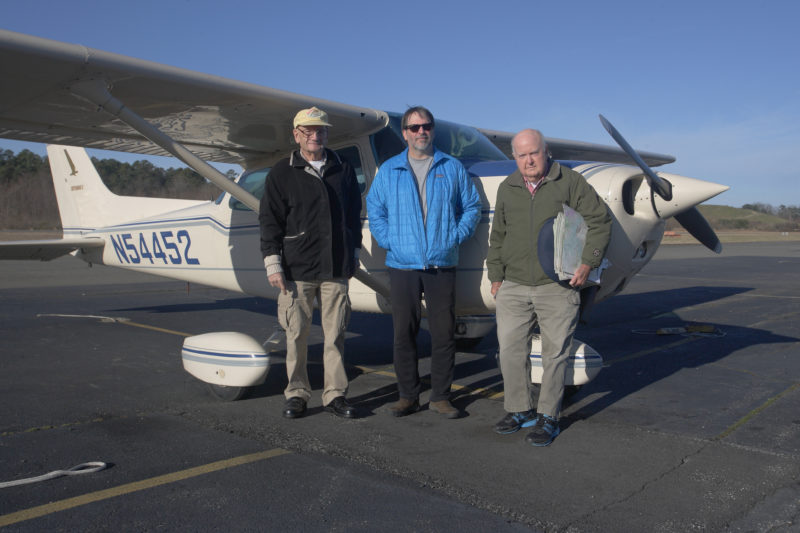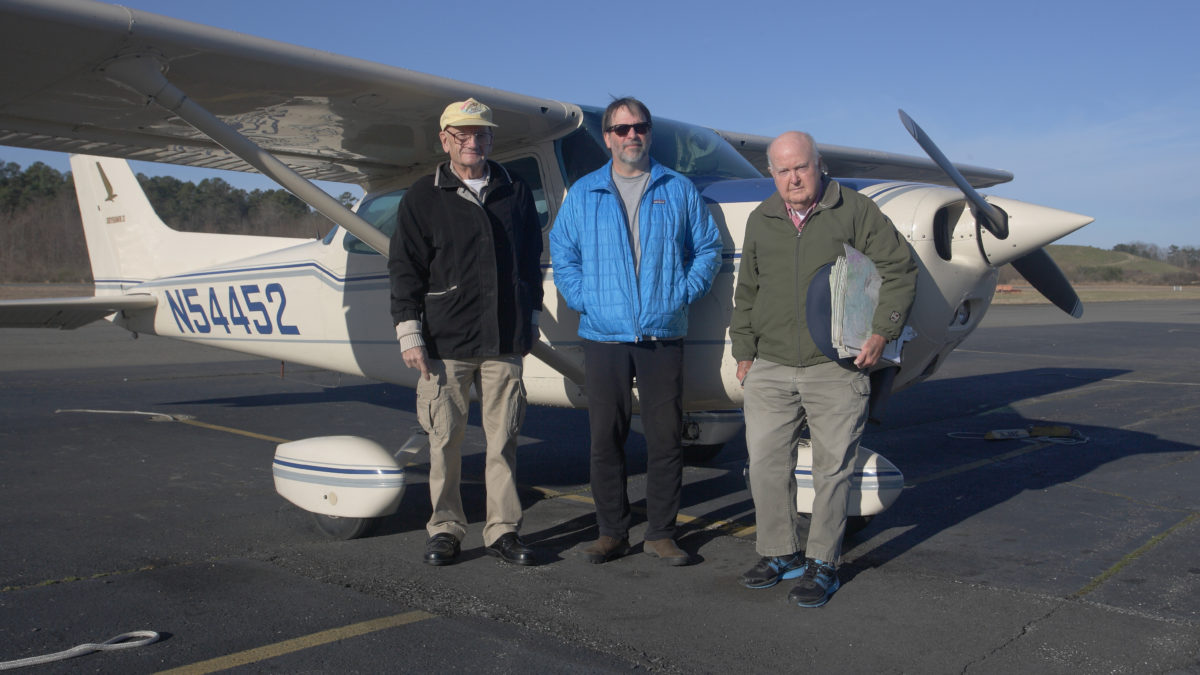The A-Team Signs Off

30th anniversary for MD-VA Barrier Islands Western Hemisphere Shorebird Reserve
January 11, 2021
Recent Literature from CCB
March 30, 2021By Bryan Watts
3/23/2021
We all knew it would happen. That one morning we would wake up as old men – time having passed over us like a puff of wind and leaving us staring into the far away. Considered the A-team for 30 years we have spent more than 3,500 hours (divided into chunks of 6-8) crammed into a small Cessna. Four hundred and fifty days fighting the winds and updrafts to map and study eagles. But the icon of bird conservation since the 1940s Mitchell Byrd is now 92. Captain Fuzzzo (the middle z is silent) Shermer Air Force pilot in Vietnam, commercial pilot, airport operator, owner of a flight school, poet and song writer turns 80 in September. The youngest of the crew, Bryan Watts is now 60. There comes a time when no matter how eagerly the spirit calls the flesh is unable to answer. The 2021 season will be the last for the team.

It has been an amazing ride. So many mornings taking off into the wind, banking out over the river, leaving the world of groundlings behind and disappearing into the realm of eagles. From the air, we have seen the landscape as they do we have felt the air currents as they do. We have been privileged to spend thousands of hours peering into their daily lives and following their recovery. We have seen generations of eagles moving across the landscape and recapturing creek after creek and somehow making them whole again. There is a gratitude that builds in having the privilege of watching as a population re-emerges on the landscape and thrives.
As observers we are bound to the present time. Our perceptions of species reflect their responses to the conditions under which we observe them. But species transcend our time and place. It is this transcendent quality that makes the journey ever new and exciting. We followed a long line of others who worked eagles in the Chesapeake including Harold Bailey, Bryant Tyrell, Jack Abbott and Fred Scott. They all attempted to interpret what eagles were facing in their time. We have studied the eagle population in our time – an exciting time of change.
The information that we have collected and the publications to date and the many to follow are like a dialogue with someone who we will never meet – a message in a bottle to be picked up along some distant shore by a young researcher with an interest in eagle ecology and the curiosity to wade deeply into the stream – someone who will expand our collective perception of eagle ecology in a way that only the future will allow. We wish for them the grand adventure of discovery that we have had.
For us it has been an honor to serve the mission of conservation and to work with so many great partners over the years: The Virginia Department of Wildlife Resources, the U.S. Fish and Wildlife Service, the U.S. Department of Defense, the National Park Service, the Virginia Department of Transportation, Dominion, Exelon, ALCOA, and The Nature Conservancy to name a few. We appreciate you all. Stay the course.




